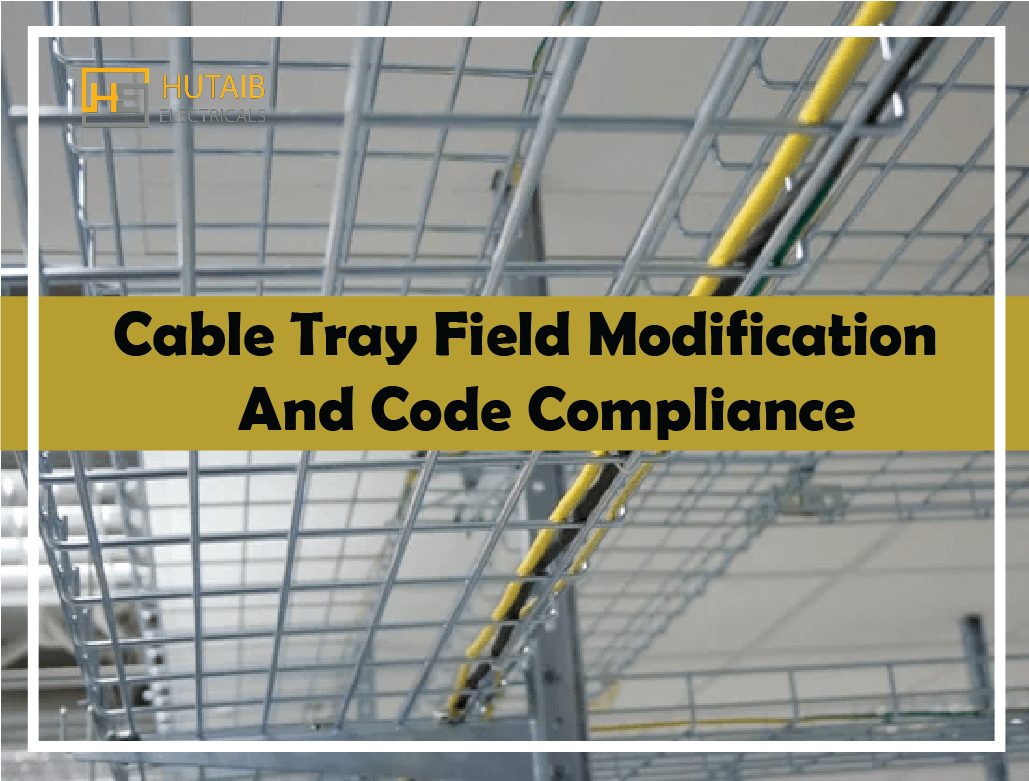Cable Tray Field Modification And Code Compliance

10-January-2022 || By: Admin
Modern Cable Trays are fabricated according to the consistency and guidelines upheld by the maker by National Electric Code (NEC). A wide range of cable tray frameworks needs to agree with industry guidelines for assembling and establishment. There are distinctive industry-standard codes for different areas like assembling, establishment and alterations of Cable Tray frameworks. The justification for setting up and implementing these norms was to have normal industry guidelines for each maker and related individual to consent and follow it.
The National Electrical Code was first settled in 1897 by the National Fire Protection Association (NFPA). The following is some data given connected with this for additional explanation.
Need For Tray's Field Adjustment
Cable tray field adjustment is changing the properties of the tray-like twisting, cutting and molding it according to the establishment prerequisite. To adjust to the exceptional fitting conditions and cabling framework network field change is obligatory and earnestly suggested. Be that as it may, during alterations the produced part is tempered and goes through certain changes. The significant justification for this being the first construction of the cable tray is fixed and unbending and during the hour of modification, it loses a portion of the physical and underlying properties. It doesn't make any difference assuming your cable tray framework was UL ordered or NEC consistent when it left the production line - when its field is adjusted, it consequently loses its code-compliance status. Why the unexpected change? First off, UL doesn't remain behind field adjusted parts, since they have no chance of checking or ensuring their security post-alteration. Furthermore, because electrical inspectors (individuals who review and offer your installation the last go-ahead) depend on UL to cover responsibility for the introduced items, any adjustment that violates UL guidelines can bring about a programmed "fall flat" in your procedure.
Important Standards Code-Compliances
-
NEMA VE 1-Metal Cable Tray
-
NEMA FG 1-Fiberglass Cable Tray
- IEC 61537-Cable Tray and Cable Ladder Systems
- UL 568-Fiberglass Cable Tray
- NFPA-79 Industrial Machinery
- NFPA-70E Employee Workplace
- NEMA VE 2-Installation Guidelines
- NECA/NEMA-105 Recommended Practice for Installing Cable Trays
- IEEE 576- A standard recommended practice for Installation, Termination and Testing of Insulated Power Cable.
- ASCE 7-05 or IEEE Standard C-2 National Electrical Safety Code
- BICSI Telecommunications Distribution Methods Manual (TDMM)Is code for Cable Tray establishment?
- IEC-61537 - This worldwide standard determines prerequisites and tests for Cable Tray frameworks.
Metallic Cable Tray
Construction Standards
- Strength and Rigidity- Cable Tray will have reasonable strength and inflexibility to offer sufficient help for all contained wiring.
- Smooth Edges- Cable Trays will not have sharp edges, burrs, or projections that could harm the protection or coats of the wiring.
- Corrosion Protection- Cable Tray frameworks will be erosion safe. Whenever made of ferrous material, the framework will be shielded from erosion.
- Side Rails- Cable Trays will have side rails or identical underlying individuals.
- Fittings- Cable Tray will remember fittings or other reasonable means for shifts for course and height of runs.
Equipment Grounding Conductor
A cable Tray might be used as the Equipment Grounding Conductor (EGC) in any installation
establishment where professional trained people will monitor and inspect the introduced cable tray
framework. There is no limitation concerning where the cable tray framework is introduced. The metal
in the cable tray might be utilized as the EGC according to the given rules. All metallic cable
trays will be grounded as required whether or not or not the cable tray is being utilized as
equipment grounding conductor (EGC). The EGC is the main conduit in an electrical framework as its
capacity is electrical conductance.
Establishing And Earthing Cable Trays
The ground network comprises all-metal pieces of a structure associated: radiates, courses, cable
tray, metal casings or gadgets, all parts which should be associated with ensuring the
equipotentiality of the ground organization. To meet this necessity a few makers suggest that the
cable tray framework be attached to the facility ground framework each 50-60 feet. By holding the
tray framework each in the above manner the tray will keep a low potential to the ground which
diminishes outside electrical and attractive aggravations and gives a constant way to remain flows.
In many installations attached to the facility, the ground network is accomplished through the cable tray support structure. Steel acrobat or other steel maintains a safe brace to the structure and steel generally gives a strong bond. Where ranges are not intrinsically clung to the facility ground and surpasses 60 feet, a different EGC or holding jumper ought to be introduced.
Strategies For Grounding
Viable installment should be extremely durable/nonstop and have sufficient ability to securely
direct any electric current liable to be forced on the framework. It ought to likewise have
impedance adequately low to restrict the potential over the ground and work with the activity of
overcurrent gadgets in the circuit. A constant, underground metallic water supply framework is
recognized to be the best electrical ground. Other appropriate techniques incorporate ceaseless
metallic steam and gas funneling frameworks, the grounded metal edge of a building or structure, or
an artificial electrode, for example, driven steel pipe, aroused or in any case shielded from
erosion, or a buried metallic plate.
Special note: Wherever numerous grounds are utilized, they should be integrated to keep away from any difference in potential between the different pieces of the tray framework.
Final Thought
At this point when introduced accurately cable tray frameworks can be an important piece of a site's
ground network fit for communicating to the ground any shortcoming flows forced on the framework.
Cable tray structures are a significant piece of electric power dispersion, correspondence and even
capacity. Their field adjustments are an imperative piece of code compliances which each producer
should consider while the creation and establishment of these trays are upheld. Hutaib Electricals
is one of the best manufacturers, wholesalers and exporters of an assortment of the cable tray
products. Alongside this, all the standard business guidelines and code-compliances are trailed by
them consistently to ensure right delivery of industrial demands.









